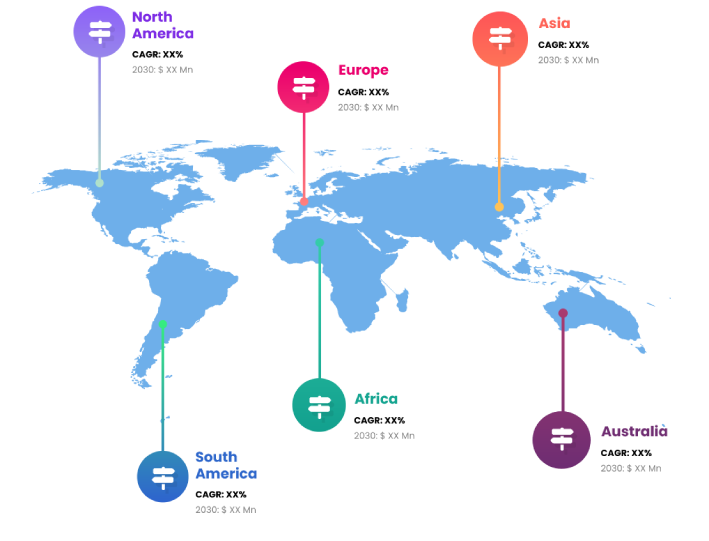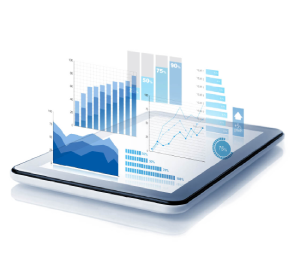Aluminum cans have many desirable properties, including their low cost, durability, portability, resistance to corrosion, and ability to effectively block light, air, and moisture. Additionally, they serve as ideal canvases for decorating and branding products while also extending their shelf lives. The food and beverage sector has made considerable use of aluminum cans as packaging. It's a convenient way to ship perishable goods over vast distances without damaging their freshness or flavor. Aluminum cans are used to package food and drinks since they are both lightweight and affordable. Aluminum cans see heavy use in the hospitality business due to the high volume of outsourced products sold to clients. The aluminum can recycling rate is among the highest of all beverage containers. There is a growing demand for specialized recycling bins in both developed and developing countries due to the growing number of recycling initiatives at the factory, government, and consumer levels. In addition to having a high recycling rate, aluminum cans are preferred because their recycling process produces 90% less energy and 90% less greenhouse gases.
Over the next few years, demand for aluminum cans will likely increase due to factors such as the increasing urbanization of populations and the introduction of novel products. Rapid technological advancements, such as the development of BPA-free aluminum cans, and rising environmental concerns have made customers more cognizant of their plastic usage, which bodes well for future market expansion. The growth of the aluminum cans market is likely to be hampered during the forecast period by the widespread availability of alternatives, such as packaging made of materials including PET and glass.

Methodology of Use Analysis
The global market for aluminum cans is divided into three categories based on their end use: food & beverage, pharmaceuticals, and chemicals. During the projection period, the food and beverage industry is projected to develop at the highest CAGR. Aluminum cans are ideal for storing carbonated and non-carbonated caffeinated drinks such soda, beer, cider, fruit juice, and energy drinks. These cans are widely utilized in the beverage sector because of their many benefits. Recycling aluminum cans also has the added benefit of lowering greenhouse gas emissions. Beverage companies all over the world are increasingly turning to aluminum cans, which is helping to fuel the industry's expansion.
Classification Based on Capability
The aluminum cans market is broken down into sub-200ml, 201-450ml, 451-600ml, 701-1000ml, and >1000ml categories. The most sales came from the 201-450 ml range. Beverage corporations such as Coca-Cola and PepsiCo, the market leaders, are getting ready to introduce aluminum-packaged water. Aluminum cans in the 201-450 ml range are popular because they are lightweight, compact, and convenient. The segment is growing rapidly because of the rising demand for RTD beverages and the proliferation of the 'on-the-go' culture.
Driver
The popularity of ready-to-drink beverages continues to rise.
People's hectic schedules, the spread of cities, and the availability of innovative drinks have all contributed to the rapid expansion of the ready-to-drink market in recent years. Beverage producers choose aluminum cans for storage because of the many advantages they provide, including increased efficiency in packing, decreased shipping costs, and substantial benefits to brand engagement. It is anticipated that the aluminum can market will grow during the projected period as makers of various beverages use different coatings to metal cans to extend the shelf life of the product.
Aluminum cans provide a number of benefits.
Aluminum production can be increased because manufacturers can adjust their production capacities in response to changes in product demand from their end consumers. Recycling aluminum cans is simple, they are lightweight, can lengthen the shelf life of food, and can be used for a variety of purposes. Because of their low environmental impact, aluminum cans are widely used by the food industry. Since the end-user industry has such a high demand for the product, the worldwide aluminum can market is predicted to expand.
Restraint
Possibility of quickly accessing alternatives
The widespread availability of inexpensive aluminum cans as alternatives to more expensive materials like plastic, glass, and paper, and the subsequent surge in demand from end-user sectors, are likely to propel the industry forward. The price of aluminum cans is also sensitive to changes in the cost of the raw materials required to produce them. Thus, consumers are looking for cheaper alternatives that can help them cut costs without compromising quality.
Main Tendencies in the Market
Aluminum cans are becoming increasingly popular as a result of a growing global movement to eliminate plastic waste. The qualities of aluminum to keep products fresh and the product's light weight are two of the primary features attracting the attention of food and beverage manufacturers. Manufacturers of a wide variety of goods have long recognized aluminum's superiority as a packaging material, driving up demand in the aluminum cans industry.
Report Coverage
Global Aluminum Cans research report categorizes the market for global based on various segments and regions, forecasts revenue growth, and analyzes trends in each submarket. Global Aluminum Cans report analyses the key growth drivers, opportunities, and challenges influencing the global market. Recent market developments and Aluminum Cans competitive strategies such as expansion, product launch and development, partnership, merger, and acquisition have been included to draw the competitive landscape in the market. The report strategically identifies and profiles the key Aluminum Cans market players and analyses their core competencies in each global market sub-segments.
| REPORT ATTRIBUTES | DETAILS |
|---|---|
| Study Period | 2017-2030 |
| Base Year | 2022 |
| Forecast Period | 2022-2030 |
| Historical Period | 2017-2021 |
| Unit | Value (USD Billion) |
| Key Companies Profiled | Ball Corporation, Crown Holdings Inc., Ardagh Group S.A., Norsk Hydro ASA, CPMC Holdings Limited, Toyo Seikan Group Holdings, Ltd., Can-Pack S.A., Jamestrong Packaging, Silgan Holdings Inc., Hulamin Containers Ltd., ORG Packaging Co., Ltd., ShengXing Group Co. Ltd., Tetra Pak International S.A., GZ Industries, Kian Joo Group, Trivium Packaging, Tata Steel Europe Ltd., Envases Universales de México, China Metal Packaging Group Co., Ltd., Alcoa Corporation |
| Segments Covered | • By Product |
| Customization Scope | Free report customization (equivalent to up to 3 analyst working days) with purchase. Addition or alteration to country, regional & segment scope |
Key Points Covered in the Report
- Market Revenue of Aluminum Cans Market from 2021 to 2030.
- Market Forecast for Aluminum Cans Market from 2021 to 2030.
- Regional Market Share and Revenue from 2021 to 2030.
- Country Market share within region from 2021 to 2030.
- Key Type and Application Revenue and forecast.
- Company Market Share Analysis, Aluminum Cans competitive scenario, ranking, and detailed company
profiles. - Market driver, restraints, and detailed COVID-19 impact on Aluminum Cans
Market
Competitive Environment:
The research provides an accurate study of the major organisations and companies operating in the global Aluminum Cans market, along with a comparative evaluation based on their product portfolios, corporate summaries, geographic reach, business plans, Aluminum Cans market shares in specific segments, and SWOT analyses. A detailed analysis of the firms' recent news and developments, such as product development, inventions, joint ventures, partnerships, mergers and acquisitions, strategic alliances, and other activities, is also included in the study. This makes it possible to assess the level of market competition as a whole.
List of Major Market Participants
Ball Corporation, Crown Holdings Inc., Ardagh Group S.A., Norsk Hydro ASA, CPMC Holdings Limited, Toyo Seikan Group Holdings, Ltd., Can-Pack S.A., Jamestrong Packaging, Silgan Holdings Inc., Hulamin Containers Ltd., ORG Packaging Co., Ltd., ShengXing Group Co. Ltd., Tetra Pak International S.A., GZ Industries, Kian Joo Group, Trivium Packaging, Tata Steel Europe Ltd., Envases Universales de México, China Metal Packaging Group Co., Ltd., Alcoa Corporation
Primary Target Market
- Market Players of Aluminum Cans
- Investors
- End-users
- Government Authorities
- Consulting And Research Firm
- Venture capitalists
- Third-party knowledge providers
- Value-Added Resellers (VARs)
Market Segment:
This study forecasts global, regional, and country revenue from 2019 to 2030. INFINITIVE DATA EXPERT has segmented the global Aluminum Cans market based on the below-mentioned segments:
Global Aluminum Cans Market, By Capacity Type
Less than 200ml
201-450ml
451-700ml
701-1000ml
More than 1000ml
Global Aluminum Cans market, By Application
Food & Beverage
Pharmaceuticals
Chemicals
Global Aluminum Cans market, Regional Analysis
- Europe: Germany, Uk, France, Italy, Spain, Russia, Rest of Europe
- The Asia Pacific: China,Japan,India,South Korea,Australia,Rest of Asia Pacific
- South America: Brazil, Argentina, Rest of South America
- Middle East & Africa: UAE, Saudi Arabia, Qatar, South Africa, Rest of Middle East & Africa
You will get in-depth and extensive aluminum cans market market research and competitor analysis for your business to help you develop more profound insights into the aluminum cans market Market.
Through INFINITIVE Data Expert is a professional Market Research services, I will identify the aluminum cans market market size, demand & opportunities, growth rate, and target audience with a comprehensive analysis of your competitors.



